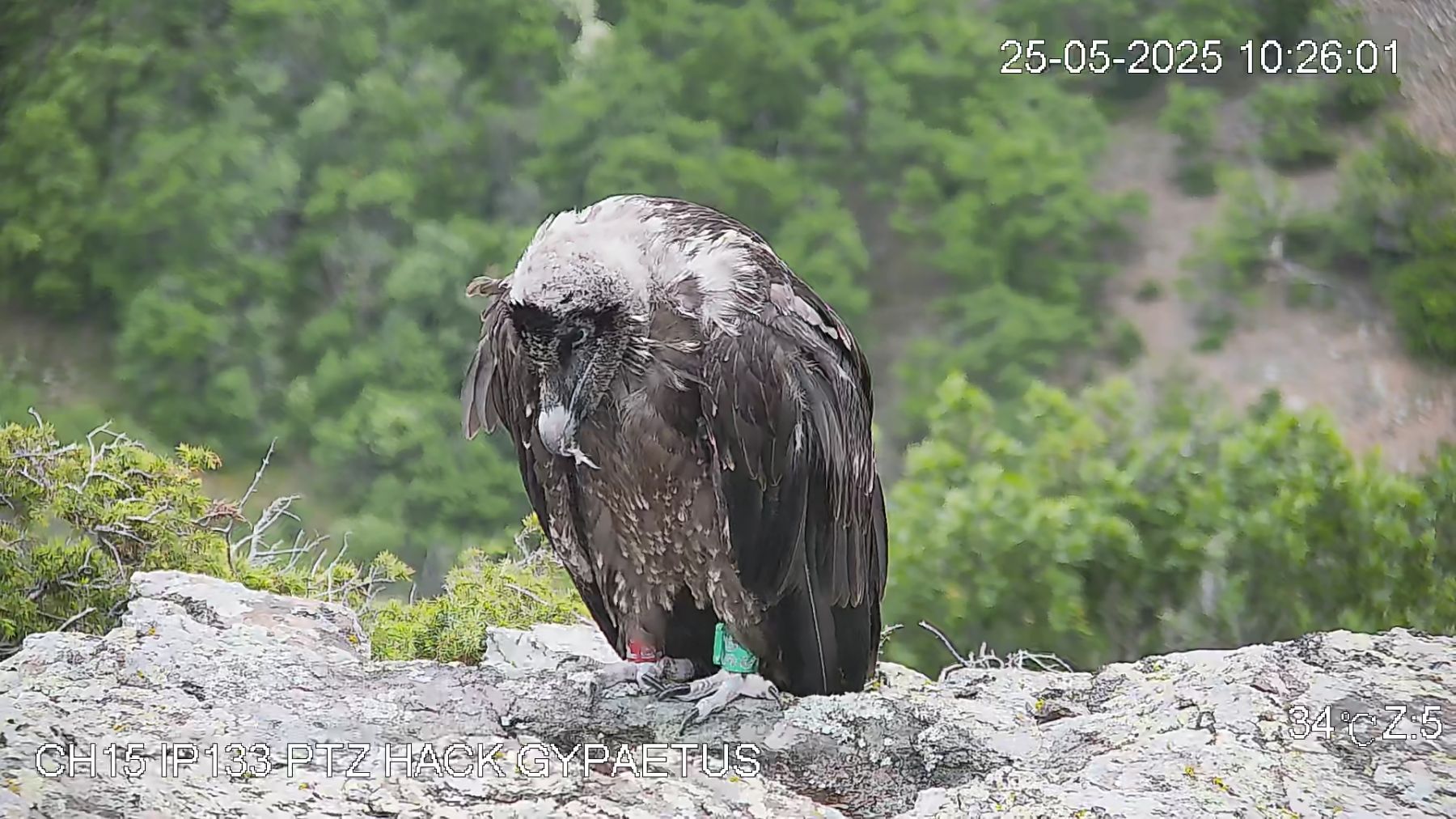
As winter approaches in the European mountains and the population of bearded vultures the African sub-species in the southern hemisphere are busy rearing their young and vulture conservation colleagues in South Africa are working on a captive-breeding programme to support the wild population.
Bearded vultures in Africa

Bearded vulture can be found in small populations north of the Sahara in the Atlas in Morocco and Tunisia. South of the Sahara a population remains in Ethiopia and along the eastern mountains of Africa from Sudan to Kenya and Tanzania. In addition to these the only population in the southern hemisphere resides isolated in the high Maluti-Drakensberg Mountains of Lesotho and South Africa, a subspecies of bearded vultures (Gypaetus barbatus meridionalis) found only here and in Ethiopia. In recent years this population has suffered more than a 30 percent decline and is listed regionally as endangered. There are estimated to be 100 breeding pairs and a total population of only 320 birds left in the wild.
Threats to South Africa’s bearded vultures
Like other populations in Africa, Europe and across Asia, bearded vultures in South Africa are at risk from threats such as illegal wildlife poisoning, however, the biggest immediate threat to this population is the proposed construction of a wind farm composed of 200 turbines in the mountains of Lesotho at the the heart of their home range. South African wildlife ecologists predict that the development would have a devastating effect on the species.
#Bred4theWild

In response to the declining population and the threats to the birds the African Raptor Centre based near Durban in South Africa have began an ambitious conservation programme back in 2015, #Bred4theWild. This programme will involve the captive-breeding of bearded vultures along the same lines as the Bearded Vulture European Endangered Species Programme – the captive breeding network we here at the Vulture Conservation Foundation coordinate.
The programme aims to create a genetically viable captive population from 20 non-related founder birds over the next five years. These founder birds will be used to breed young birds that can be released back into the wild.
In 2015 the only bearded vulture in captivity was an adult female, Lesli who was rescued from a traditional healer. So to achieve this aim conservationists from the African Raptor Centre need to harvest second eggs from wild nests. Bearded vultures usually produce a clutch of two eggs, but will only raise one young. The team can take the second egg from the nest without affecting the wild birds and to raise the chick in captivity.

This year the team went out on another expedition into the Maluti-Drakensberg Mountains and brought back one egg.
The team have incubated the egg and after successfully hatching is currently being raised by the team (and the help of a puppet bearded vulture).
The efforts by the team at the African Raptor Centre are fantastic and will hopefully secure the future of the southern hemisphere’s only population of bearded vultures.
You can follow their work via their blog and also on their Facebook page.




